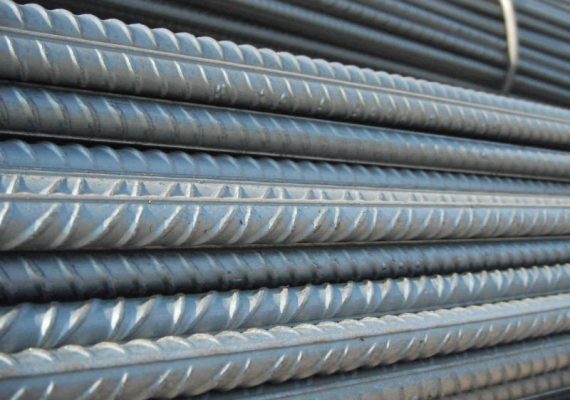What Is A Wrought Iron?
What Is A Wrought Iron?
rought iron is a type of iron alloy that has a very low carbon content and is known for its malleability, ductility, and resistance to corrosion. It is made by hammering, rolling or otherwise working iron while it is hot enough to expel molten slag, which gives it a grainy texture that is visible when the iron is etched, rusted or bent to the point of breaking.
Wrought iron is tough and can be easily forged welded, but is more difficult to weld using electricity. It was once a common form of iron but has since been replaced by mild steel, also known as low-carbon steel, in most applications.
Wrought iron was traditionally used to make swords, tools, springs, and other items, but is now mostly used for decorative purposes, such as railings, furniture and gates. It is no longer produced on a large scale and many products labeled as wrought iron are actually made of mild steel.
Its low carbon content also makes it resistant to corrosion from air or water exposure. Today, wrought iron is one of the preferred building materials due to its beauty, durability and versatility.
History Of Wrought Iron
Wrought iron is a type of iron that has been used for centuries and is the form of iron commonly referred to in Western history. In contrast, cast iron was used in China since ancient times but was not introduced to Western Europe until the 15th century.
Cast iron is brittle and can only be used for certain purposes. In the Middle Ages, iron was produced by reducing ore in manually-operated bloomeries, although water power was also used for this purpose by 1104.
The raw material produced through indirect methods, such as the osmond process (developed in 1203) or finery processes (developed in the 15th century), is called pig iron and has a high carbon content, making it brittle and unable to be used to make hardware.
These processes were eventually replaced in the late 18th century by the puddling process and variants such as the Swedish Lancashire process. Wrought iron is no longer commercially manufactured today.
In ancient China, new iron smelting processes allowed for the production of wrought iron tools for agriculture, such as seed drills and plows. The ancient Chinese also used a finery forge to produce wrought iron by the 2nd century BC. This process involved melting cast iron and removing carbon through oxidation in a fining hearth.
Properties Of Wrought Iron
Wrought iron is a type of iron that has a low carbon content (at least 0.08%) and is obtained by smelting pig iron. It is strong, malleable, ductile and resistant to corrosion and can be easily welded.
The term “wrought” refers to the ability to be worked while hot using hammering, rolling or other methods to remove molten slag.
Wrought iron is also resistant to fatigue due to its toughness and contains less carbon than cast iron making it softer and more ductile. It is highly refined and consists of 99% iron, making it easy to forge, bend, and draw.
Some properties of wrought iron include good weldability, ductility, inability to be hardened through heat treatment, malleability, high tensile and compressive strength, ease of forging and inability to withstand sudden loads.
Applications Of Wrought Iron
Wrought iron is a type of metal that has a low carbon and alloy content and is known for its durability and resistance to corrosion. It has a strength value of 220N/mm² which is slightly lower than that of mild steel (230N/mm²).
Wrought iron is often used in the construction of decorative items such as fences, gates, railings, balconies, porches, canopies and roof cresting, as well as in the production of hardware, nails, iron cramps, lamps, and structural members in tension.
It can be joined together using welding or riveting and is known for its ability to withstand deterioration over a long period of time with proper maintenance. In the past, wrought iron was widely used in building construction, but it has largely been replaced by steel in the 20th century due to the latter’s greater availability.
Some other common applications of wrought iron include the production of table bases, curtain rods, candle holders, bolts, nuts, rivets, chains, pipes, crane hooks, handrails, carpenter tools, forging and railway couplings.
Advantages Of Wrought Iron
Wrought iron has many advantages over other materials. It is strong and durable, making it ideal for outdoor use since it can withstand different types of weather conditions.
Wrought iron is also rust-resistant, meaning that it does not need to be treated or replaced often due to corrosion.
Additionally, wrought iron has a classic look and feel that complements any garden or home’s design. With its strength and beauty, wrought iron is an excellent choice for your next project.
Disadvantages Of Wrought Iron
Wrought iron has some limitations, including the inability to be hardened through heat treatment and susceptibility to failure under sudden loads. These limitations may affect its use in certain applications.
Conclusion
In conclusion, wrought iron is a versatile and durable material that has been used for centuries by craftsmen and artisans.
Its use in modern times for everything from fencing to furniture has made it a popular choice among homeowners who have an appreciation for its timeless beauty. Whether you’re looking to spruce up the exterior of your home or enhance the decor inside, wrought iron will definitely make its mark.

